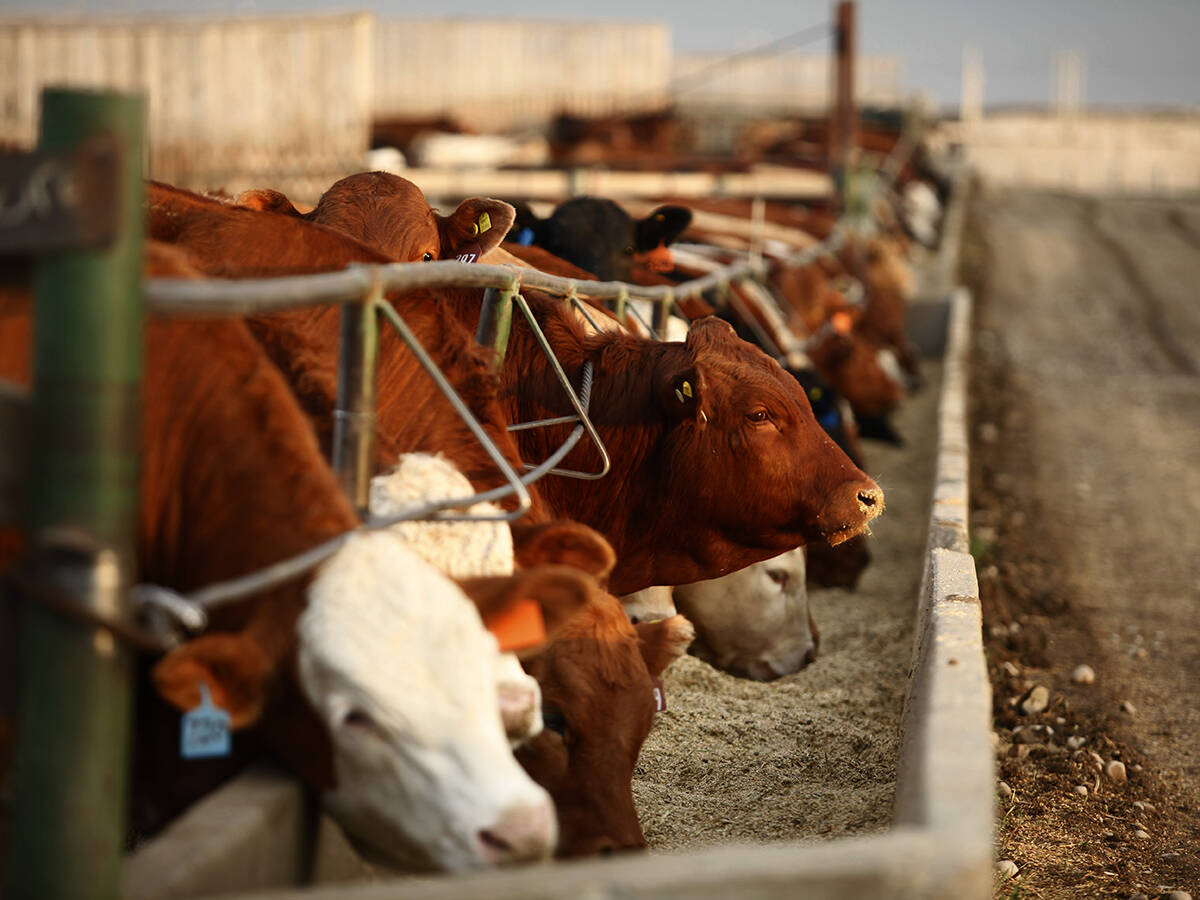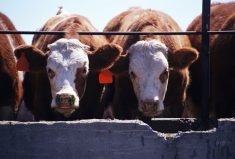Western Canada’s feeder cattle prices traded $3 to $5 higher over the past week, with lighter weight categories under 700 pounds jumping $8 to $10 in some cases. Renewed buying interest surfaced based on strength in Alberta fed cattle prices, which traded as high as $198.
Improving feedlot margins in the nearby and deferred positions allowed buyers to increase bids across all weight classes. Feedlot operators have financial room to carry larger numbers through the summer and the growing income has shifted the demand curve beyond all expectations. Ongoing orders from south of the border also kept the market well supported where U.S. feeder cattle prices were $2 to $5 higher on average.
Read Also

U.S. livestock: Cattle extend gains on improving cash prices, packer demand
Reuters — Chicago Mercantile Exchange live cattle futures set a three-week high and feeder cattle hit their highest level in…
In central Alberta, black Angus-based steers with medium flesh weighing just over 700 lbs. sold above the magical $300 level, dropping the gavel at $306. In Manitoba, 800-lb.-plus steers were readily trading from $252 to $256.
The steer/heifer spread appeared to weaken this past week. Quality heifers were trading at a $20 discount, which stretched to $30 on certain quality cases. Lighter-weight cattle experienced a slower climb because of the psychological reality on the higher price structure. While feedlots continued to be aggressive, the smaller cattle producer shopping for grassers appeared to be on the sidelines.
Stronger fed cattle prices caused packing margins to come under pressure over the past couple of months. However, industry reports suggest retail prices surged this past week, which should translate into stronger wholesale beef prices. The overall economy stagnated during the first quarter due to extreme winter conditions. Consumers in Eastern Canada and along the U.S. Eastern Seaboard were constrained, and this tempered overall beef consumption. We now see pent-up demand stepping forward with improving restaurant traffic and retail beef consumption. I feel this is a major factor currently driving the fed and feeder cattle markets higher, which should continue over the next month.
— Jerry Klassen is a commodity market analyst in Winnipeg and maintains an interest in the family feedlot in southern Alberta. He writes an in-depth biweekly commentary, Canadian Feedlot and Cattle Market Analysis, for feedlot operators in Canada. He can be reached by email at [email protected] for questions or comments.
















